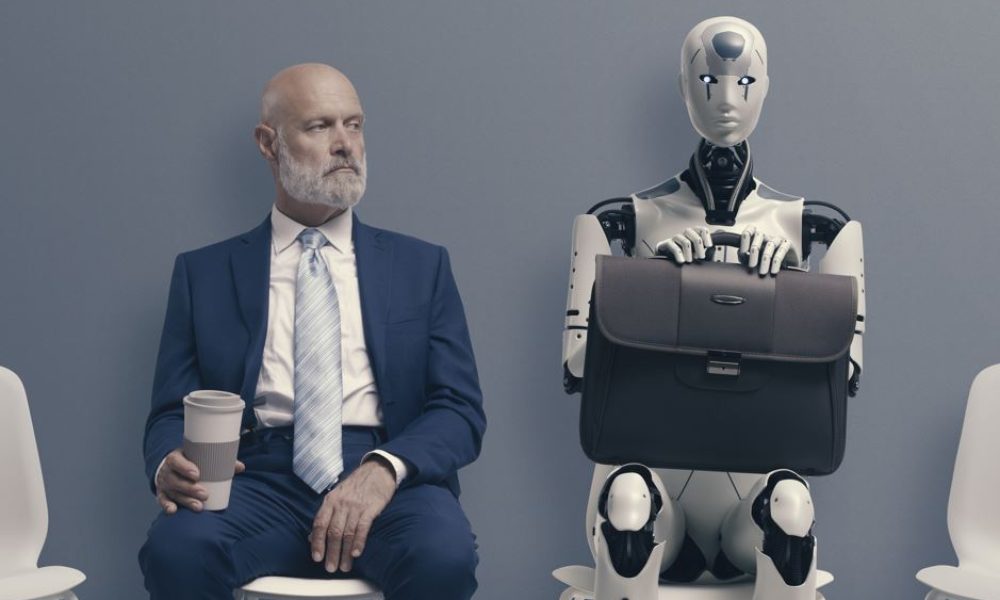It’s one thing for robots to serve food and drinks and clear tables, but don’t be surprised if robots are making beds in the future on the Las Vegas Strip and other properties across the country.
Despite challenges to robots operating in crowded casino environments, ongoing labor shortages in the casino and hospitality industries will prompt executives to seek out more uses for robotics that don’t exist today, according to Robert Ripee, executive director of the University of Nevada Las Vegas Black Fire Innovation Hub & UNLV Incubator powered by Hughes Center. He insists that the industry is just scratching the surface of the use of robots.
“We’re not seeing C-3PO. We’re seeing co-bots or robots that assist humans in various tasks – restaurants, food and beverage, housekeeping, and security,” said Ripee, who appeared at the TribalNet technology conference in San Diego. “The capacity and capability of the robot are fairly limited. It’s for a single purpose. Four years ago, pre-COVID, there was more emphasis on the AI-powered humanoid-looking robot, but today in restaurants, airports, hospitals, and hotels, you see these limited-service co-bots scaling quite rapidly.”
Bringing linens to housekeeping and water to rooms, making other deliveries, restocking shelves, and bussing tables are among robot tasks. They can also serve as a security patrol, especially outside, that can report suspicious activity to staff.
Prior to the pandemic, the gaming industry weren’t that interested in robots and told manufacturers to bring something useful, Ripee said.
“Something happened after COVID that affected everyone,” Ripee said. “Shortly after the Strip reopened, a lot of CIOs came to my lab and said, ‘We have a massive labor problem. We have 5,000 open positions in housekeeping in Las Vegas and we can’t fill them. Do you have a robotic solution for us?’”
In May, Nevada Gov. Joe Lombardo signed legislation that absolves hotels from daily cleaning of rooms, which mitigates the labor situation somewhat. Still, it continues to hamper the industry.
As for how robots can factor in beyond delivering linens and bussing tables, Ripee said the answer is going to have to come from the manufacturers. Its entrepreneurs and engineers have to create solutions to fill the roles the resorts need.
“If you have an open position in housekeeping that you can’t fill, you either find an alternative or start taking rooms out of service,” Ripee said. “If your alternative is robotics, that puts pressure on entrepreneurs. Do they have a bed-making robot? No, but we have this robot with heavy-lifting arms used in manufacturing that we can adapt.”
A number of obstacles remain, however, to using robots in crowded casino environments, Ripee said.
A few months ago, UNLV held a discovery session with robotics executives who wanted to get better insight into infrastructure requirements and obstacles to operating in resort settings.
“We brought in several CTOs and operators from the Strip. The discussion was about the obstacles and to the CTOs, it was a life-changing moment,” Ripee said.
For example, resorts are hectic at 8 a.m., so it would be difficult for the robot to get on a service elevator.
“It’s going to sit at the landing and wait, because it’s got people-avoidance boundaries around it. Those elevators are packed with housekeepers and engineers moving around. You end with a robot waiting for an hour on a landing. That caused a CTO to rethink the logic. The robot won’t get on an elevator if a human is within a foot of it, but there’ll always be a human within a foot of it and it’s going to get bumped and hit by housekeeping carts. Those kinds of obstacles only come from operators in the real-world environment.”
While it’s not a robotics world yet, robots are becoming more common and accepted in society in resorts by performing functions that improve a guest experience or make people feel more secure, Ripee said.
“What I don’t see is the highly enabled AI robots that are perceived as thinking or acting independently,” Ripee said.
Resorts and others don’t want anything with a human-looking face, but prefer something smaller and less disarming, said Jeff Debrosse, CEO of Sympler, who also founded NXT Robotics.
“You don’t want latex heads or human faces on a robot,” Debrosse said. “It’s amazingly unsettling. We did find that things like turn signals on robots, indicating intention, is incredibly helpful. When people don’t know what robots are about to do, they get really uncomfortable.”
Not every customer, however, is willing to use the robot function.
Ripee said UNLV did a research project where they looked at human and machine interfaces known as HMI and the ways in which different age groups of patrons react to placing a bet via a robot, kiosk, and human agent.
“There was very clear delineation in the age group that aligned in general technology adoption,” Ripee said. “Younger generations who grow up surrounded by the technology adopt it very readily and aren’t intimated or frightened by it. An older generation that has to adopt a technology they’re not used to is standoffish. They will take a much longer period to adopt. We found that in the betting environment, older patrons don’t know if they like the technology, whether it’s a robot or kiosk. They tended toward the human agent. Younger patrons think the machines are great, because they’re very fast and efficient and they can get on to watching the game.”
Robots can cost $20,000 to $30,000 each or even higher, plus monthly maintenance costs. Some properties turn to leasing the robots rather than purchasing them, Debrosse said.


